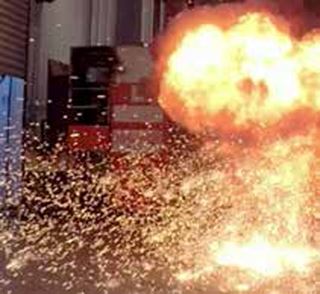Key points
Key points
- Electrical safety regulations provide a legal framework which references the wiring rules AS/NZS 3000
- for example, the Electrical Safety Act of Victoria Division 2, Regulation 108 states:
“The Australian/New Zealand Wiring Rules are applied, adopted or incorporated under these Regulations with the following modifications—
(a) every reference in the Rules to a regulatory authority is a reference to Energy Safe Victoria;
(b) every reference in the Rules to an electrician is a reference to a licensed electrician;
(c) every reference in the Rules to a licensed electrical contractor is a reference to a registered electrical contractor;
(d) every reference in the Rules to water and gas suppliers includes a reference to telecommunication suppliers.” - AS/NZS 3000 defines the minimum requirement for compliance to nominated standards (i.e., AS/NZS 61439).
Therefore, all switchboards are required to satisfy a switchboard standard. However, in AS/NZS 61439 the requirements are dependent of ratings. e.g.
- Short circuit verification is not required at or under 10kA r.m.s.
- Temperature rise limit verification by calculation may only be completed for multicompartment assemblies not exceeding 1600A (or single compartment ASSEMBLY not exceeding 630A). - AS/NZS 61439 has 7 parts:
- Part 0 - A guide for specifiers to be used at tender
- Part 1 - General rules
- Part 2 - Low voltage switchgear and control gear assemblies
- Part 3 - Distribution boards intended to be operated by ordinary persons
- Part 4 - Assemblies for construction sites
- Part 5 - Assemblies for power distribution in public networks
- Part 6 - Busbar trunking systems - The standards reference three parties that are responsible for ensuring an assembly is verified. The original manufacturer, the assembly manufacturer, and the user.*
- The original manufacturer carries out the original design and the original verification. These verification documents are available for the consumers of the products to download and reference. An example of an original manufacturer is CUBIC.
- The assembly manufacturer designs the assembly according to the requirement given by the user and the verification document provided by the original manufacturer. An example of an assembly manufacturer is a switchboard builder.
- The users are the end-users of the completed assembly. - The final verification is the responsibility of the assembly manufacturer. Should an assembly manufacturer deviate from the original documentation, then the assembly manufacturer is deemed to be the original manufacturer in respect of those arrangements.
- If the user accepts a switchboard without verification of one or more characteristics in Annex D, then they are at risk of being financially and legally responsible for any issues that may arise.
- There are three methods of verification - verification by test, verification by comparison and verification by assessment. Click here for more information.
- The "In-Country Notes" that modify IEC 61439 to AS/NZS 61439 only affect the Assembly Manufacturers requirements. Therefore, any Original Manufacturer’s test documents to IEC 61439 may be used to support the assembly manufacturers’ verification assessment of the switchboard design to AS/NZS 61439. Additional verification to meet the in-country notes may be required.
- Test certification to AS/NZS 3439 may be used for verification characteristics to AS/NZS 61439 only if the test methods required are the same. For example:
- Short circuit tests remain the same and may be used.
- Temperature rise test requirements differ, therefore may require further testing.
What about arc fault containment
Under AS/NZS 3439, arc fault containment is an option to be specified, with local AS/NZS test procedures described in Annex ZD.
Under AS/NZS 61439, arc fault containment remains an optional specification, with the local AS/NZS Annex ZD being included but also referencing the option of IEC TR 61641. The IEC arc fault containment test requirements are more descriptive and robust.
